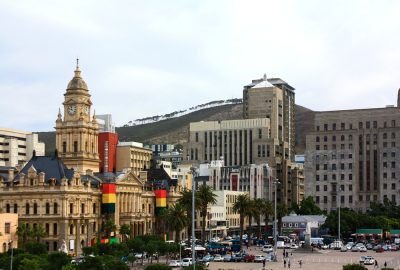Cape Town has always reminded me of a Latin phrase that stuck with me since my high school days. “Per Aspera ad Astra” means “through thorns to the stars” and I think it best describes this city. As most settlements in the region, Cape Town started out as a humble trade post: a stop on the way to the Orient and back. The Dutch have planted a tiny seed in 1652 and they couldn’t begin to imagine what it’d bloom into. They brought European flora with them, like grapes which made Cape Town a famous destination for wine lovers. It wasn’t either fast or easy at first, as they didn’t have many workers. What do you do when you’re far away from home and you need labour done? You enslave people. At least they did back then it was a popular mind-set among the colonial nations. So began the influx of workforce from Indonesia, Madagascar and local African tribes. There were more than a few conflicts between the English and the Dutch, which ended by signing treaties. The “coloured” part of Cape Town’s population was, for the most part, peaceful and happy. Then the government started getting paranoid, smelled an uprising brewing in the suburbs. So, they decided to sort people according to race and put them in corresponding “districts”.

Bo-Kaap, previously known as the Malay Quarter, is a former township on the slopes of Signal Hill above the city; with its cheerfully coloured houses it's without doubt Cape Town's most photographed area
District 9, a mind-blowing movie from 2010 was based on the events that happened in Cape Town’s District 6. 60,000 African people were removed from their homes because the area has been declared as a district for the white community. People didn’t like it all that much and expressed their discontent in a peaceful way. The government wouldn’t have any of that insubordination so they sent all the rebellious souls to Robben Island. Nelson Mandela was one of those prisoners, possibly even The Prisoner. They eventually released him and he became the first black South African president. Things started looking better, but even now Cape Town is still scarred by its controversial past. You can learn more about apartheid and Cape’s history at the Robben Island (https://www.robben-island.org.za/) or the District Six Museum (https://www.districtsix.co.za/). You can also visit what’s left of the districts. They are communities similar to Brazilian favelas: poor, a bit dangerous but oh-so-colourful and vibrant with lovely people. Make sure you visit Mzoli's Place, located in the infamous Gugulethu, which wasn’t the safest place to be during apartheid. Mzoli’s Place has become a renowned place by now; it’s like a meat shop with a BBQ bar and a dash of a street party.

Cape Town's City Hall, built from honey-coloured limestone imported all the way from England is at the city's main square, the Grand Parade; right here Nelson Mandela addressed for the first time the South African nation after being released from prison in 1990 and Mandela's bronze statue on the city hall's balcony commemorates this historical event
Cape Town or Kaapstad as the name is in Afrikaans, one of the national languages, is nicknamed the “Mother City”. It is enormous, almost overwhelmingly. At some stage you will notice the mountains surrounding it and making you realize how tiny you are. The view from those mountains is breath-taking; you can hike to the top of the epic Table Mountain. Taking a cable cart is an option. I mean, who cares how you got there? It’s the destination that matters, not the journey. Lion’s Head, a legendary mountain, provides another perspective on Cape Town. You can see as far as the Robben Island and enjoy the perfect weather and nature even if you’re afraid of heights. This area of the world is famous for its beaches and surfing communities. People move to Cape Town to learn and improve their technique and it’s totally worth it. Beaches are many and they’re all stunning with golden white sands and ferocious waves. Muizenberg and Llandudno are two out of dozens of beaches worth checking out in the area. Beware of the sharks; the Cape’s waters are known for their large shark population. You can get close and personal with those apex predators. Just hire one of the companies that organize shark cage diving. Or go snorkelling if you’d rather meet the sharks without the cage.
I make it sound like there’s stuff to enjoy only outside of the city itself. Quite the contrary, Cape Town reminds me of New Orleans during Mardi Gras. It’s Victorian architecture, cosy balcony bars, and an everlasting party. Fuel up with the locals at the recently renovated Old Biscuit Mill with its many street food stands. Leave your dignity and self-control behind and head over downtown to Long St. and Green St. for a bar crawl of a lifetime. After-party at the Waterfront harbour area and enjoy life to the fullest while watching the sunrise.



No one commented yet. Be the first.